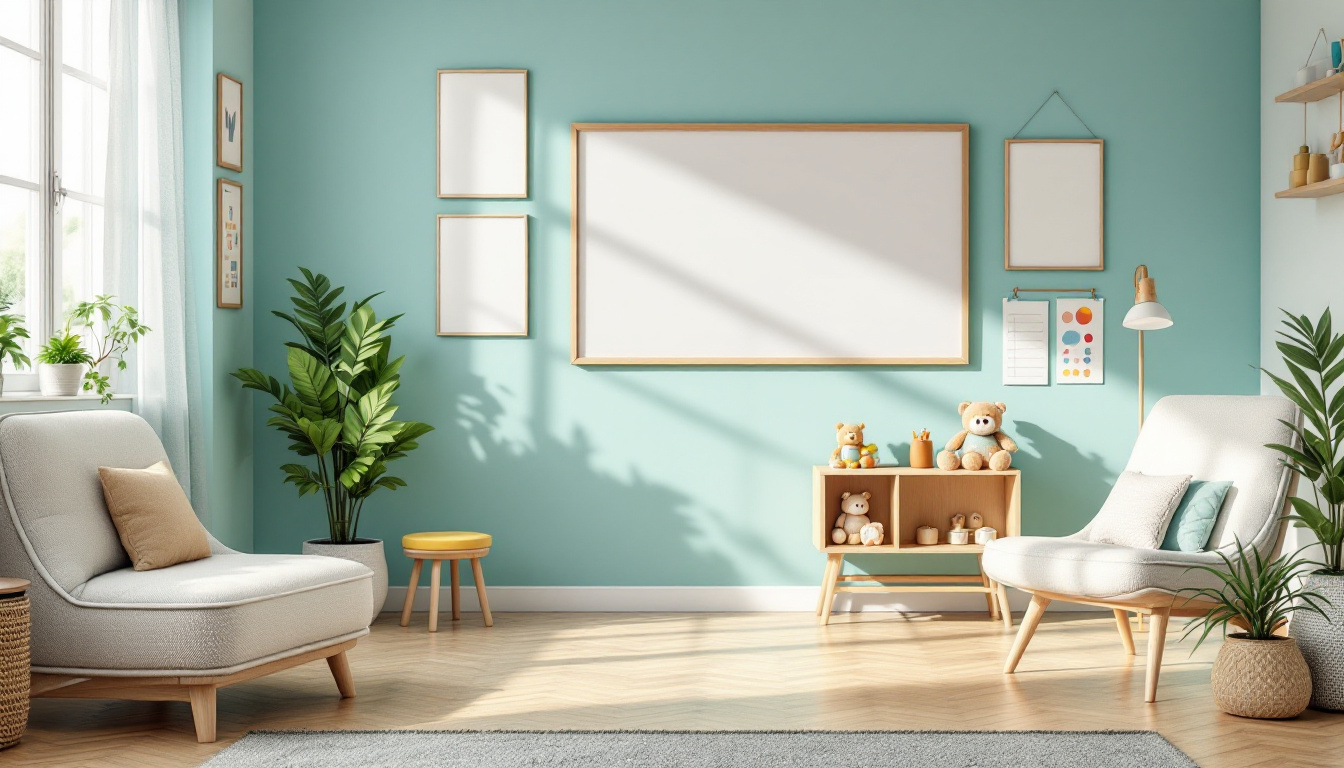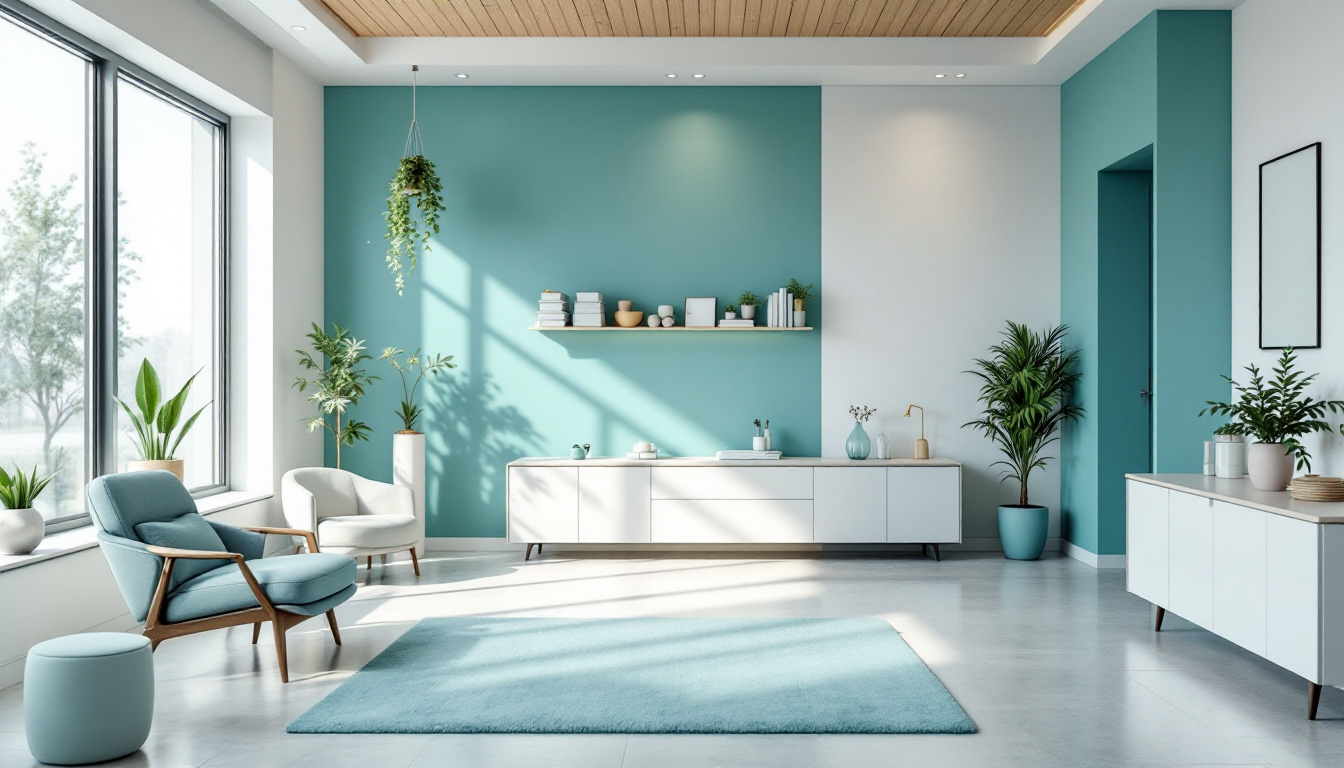Top 5 Benefits of Using Sensory Table Ideas for Autism
.jpg)

Understanding Sensory Tables for Autism
Sensory play is a vital component in the development and well-being of individuals with autism. Sensory tables, in particular, provide a structured and interactive way to engage the senses and promote learning. In this section, we will explore the importance of sensory play for individuals with autism and the benefits of using sensory tables in their daily activities.
Importance of Sensory Play for Individuals with Autism
Sensory play plays a crucial role in the lives of individuals with autism by providing a means to explore and understand their environment. Autism is characterized by sensory processing differences, where individuals may have heightened or diminished sensory responses to various stimuli. Sensory play helps individuals with autism regulate their sensory experiences, enhance their sensory integration skills, and develop coping strategies.
Engaging in sensory activities can have a positive impact on various aspects of development, including cognitive, social, emotional, and physical domains. By stimulating the senses, sensory play can promote attention, concentration, problem-solving skills, creativity, and self-expression. It can also help individuals with autism improve their motor skills, coordination, and body awareness.
Benefits of Using Sensory Tables
Sensory tables provide a structured and contained space for individuals with autism to engage in sensory play. These tables are specifically designed to accommodate various materials and activities that target different sensory modalities. Here are some benefits of using sensory tables for individuals with autism:
- Enhances sensory exploration: Sensory tables offer a controlled environment where individuals can explore different textures, sounds, colors, and smells. This allows them to engage and interact with sensory stimuli at their own pace, promoting sensory exploration and discovery.
- Promotes sensory integration: Sensory tables facilitate the integration of sensory input from multiple senses, helping individuals with autism make connections between different sensory experiences. This integration is essential for improving sensory processing skills and sensory-motor coordination.
- Encourages focused attention: Sensory play at a table encourages individuals to concentrate on a specific task or activity. This focused attention helps improve their ability to filter out distractions and stay engaged with the sensory experience.
- Provides a safe and structured environment: Sensory tables are designed to be safe and contain sensory materials, reducing the chances of overwhelming sensory input. The structured nature of these tables allows individuals with autism to feel more secure and in control during sensory play.
- Supports social interaction: Sensory tables can be used in group settings, providing opportunities for social interaction and cooperation. Engaging in sensory play together promotes communication, joint attention, sharing, and turn-taking skills.
By understanding the importance of sensory play for individuals with autism and the benefits of using sensory tables, caregivers, educators, and therapists can create meaningful and enriching sensory experiences that cater to the unique needs of individuals with autism.
Types of Sensory Tables

Sensory tables are a valuable tool for individuals with autism, offering a wide range of sensory experiences that can promote learning, engagement, and relaxation. There are various types of sensory tables, each designed to provide unique tactile and sensory stimulation. In this section, we will explore three common types of sensory tables: water-based, sand-based, and texture-based.
Water-Based Sensory Tables
Water-based sensory tables are a popular choice for sensory play. These tables are typically filled with water, offering a soothing and tactile experience. Individuals with autism can engage in various activities, such as pouring, splashing, and scooping, which can enhance their fine motor skills and hand-eye coordination.
Water-based sensory tables can also be combined with other sensory elements, such as floating toys, colored water, or scented materials, to further stimulate the senses. Here are some examples of water-based sensory activities for individuals with autism:
- Floating objects to encourage visual tracking and hand-eye coordination.
- Adding water-safe toys or objects with different textures to explore tactile sensations.
- Incorporating water play with colored water or scented materials to engage multiple senses.
Sand-Based Sensory Tables
Sand-based sensory tables provide a different tactile experience, allowing individuals with autism to explore the unique texture and properties of sand. Sand play can be both calming and stimulating, promoting sensory integration and creativity.
Sand-based sensory tables offer opportunities for various activities, such as building sandcastles, shaping sand with molds, or creating patterns and designs. These activities can enhance fine motor skills, spatial awareness, and imaginative play. Here are some examples of sand-based sensory activities for individuals with autism:
- Using different tools, such as shovels, rakes, or sifters, to manipulate the sand.
- Adding small toys or objects to hide and discover within the sand.
- Incorporating natural elements like shells or rocks to introduce different textures and sensory experiences.
Texture-Based Sensory Tables
Texture-based sensory tables focus on providing a variety of tactile experiences using different materials and textures. These tables can be filled with materials like rice, beans, fabric, or foam, offering a wide range of textures for individuals with autism to explore.
Texture-based sensory tables can be customized according to individual preferences and needs. They provide opportunities for activities such as sorting, pouring, and manipulating different textures, which can help develop sensory processing skills and provide a calming effect. Here are some examples of texture-based sensory activities for individuals with autism:
- Sorting different textured objects or materials based on similarities or differences.
- Burying small objects within the sensory material for individuals to find and uncover.
- Providing various materials with different textures, such as soft fabrics, squishy foam, or smooth stones.
By incorporating different types of sensory tables, individuals with autism can engage in meaningful and enjoyable sensory play experiences. These tables offer a safe and controlled environment for sensory exploration, promoting development, relaxation, and sensory integration.
Incorporating Sensory Activities
To create a sensory-rich environment for individuals with autism, incorporating sensory activities is key. These activities help stimulate and engage the senses, providing opportunities for learning, exploration, and self-expression. Here are some sensory play ideas specifically designed to target visual, auditory, and tactile stimulation.
Sensory Play Ideas for Visual Stimulation
Visual stimulation activities are beneficial for individuals with autism as they help develop visual tracking skills, enhance focus, and promote visual processing. Consider incorporating the following sensory play ideas for visual stimulation:
Sensory Play Ideas for Auditory Stimulation
Auditory stimulation activities focus on engaging the sense of hearing and can help individuals with autism develop auditory processing skills, improve focus, and promote relaxation. Consider incorporating the following sensory play ideas for auditory stimulation:
Sensory Play Ideas for Tactile Stimulation
Tactile stimulation activities focus on engaging the sense of touch, promoting sensory integration, and enhancing fine motor skills. Consider incorporating the following sensory play ideas for tactile stimulation:
Incorporating these sensory play ideas can help create a stimulating and engaging environment for individuals with autism. Remember to tailor the activities to individual preferences and sensitivities, ensuring a positive and enjoyable sensory experience.
Creating a Sensory-Friendly Environment

To fully engage individuals with autism in sensory table activities, it's essential to create a sensory-friendly environment. This includes designing the space for sensory tables and ensuring safety and comfort within the environment.
Designing the Space for Sensory Tables
When designing the space for sensory tables, it's important to consider several factors to optimize the sensory experience for individuals with autism. Here are some key considerations:
- Location: Choose a quiet and secluded area within the room to minimize distractions and create a safe space for focused sensory exploration.
- Lighting: Use soft, diffused lighting to create a calming atmosphere. Natural light or warm, dimmed lighting can be beneficial for individuals with autism.
- Organization: Arrange the sensory tables in a way that allows for easy movement and accessibility. Leave enough space between tables to prevent overcrowding and provide a clear path for individuals to navigate.
- Visual Cues: Incorporate visual cues, such as colorful posters or visual schedules, to provide structure and promote understanding of the sensory activities. Visual boundaries or markers can also help define the space for each individual.
- Quiet Zones: Designate separate areas within the sensory environment as quiet zones where individuals can retreat if they become overwhelmed or need a break from sensory stimulation.
Ensuring Safety and Comfort in the Environment
Creating a safe and comfortable environment is crucial for individuals with autism to fully engage in sensory table activities. Here are some important considerations:
- Sensory Table Placement: Ensure that the sensory tables are stable and secure to prevent accidental tipping or toppling. Place them on a level surface and consider using non-slip mats or padding underneath for added stability.
- Materials and Equipment: Regularly inspect the materials and equipment used in the sensory tables to ensure they are safe and free from any hazards. Remove any sharp or potentially harmful objects. Choose sensory materials that are non-toxic and age-appropriate.
- Sensory Table Cleanliness: Maintain cleanliness and hygiene within the sensory environment. Regularly clean and sanitize the sensory tables and materials to prevent the spread of germs and ensure a safe and healthy play area.
- Comfortable Seating: Provide comfortable seating options, such as soft cushions or bean bags, to enhance the comfort and relaxation of individuals during sensory activities. Consider individual preferences and sensory sensitivities when selecting seating options.
Creating a sensory-friendly environment involves careful consideration of the physical space and ensuring a safe and comfortable setting for individuals with autism to engage in sensory table activities. By designing the space thoughtfully and prioritizing safety and comfort, you can create an environment that promotes meaningful sensory experiences and supports the unique needs of individuals with autism.
Sensory Table Activities for Different Needs
When it comes to sensory play for individuals with autism, incorporating activities that cater to different needs is essential. Sensory tables provide a versatile platform for engaging with various sensory experiences. Here are some activity ideas for different needs: calming and relaxation, stimulating the senses, and encouraging social interaction.
Activities for Calming and Relaxation
For individuals who benefit from calming and relaxation activities, consider incorporating the following sensory table ideas:
Activities for Stimulating the Senses
To engage and stimulate the senses, try incorporating the following sensory table activities:
Activities for Encouraging Social Interaction
Sensory tables can also provide opportunities for individuals with autism to engage in social interaction. Consider the following activity ideas:
These sensory table activities cater to different needs and can be adapted to suit individual preferences and abilities. Remember to provide a safe and comfortable environment while supervising the activities to ensure an enjoyable and beneficial sensory play experience for individuals with autism.
Sources
https://www.autismparentingmagazine.com/sensory-table-ideas
https://playtolearnpreschool.us/sensory-table-ideas
https://www.ambitionsaba.com/sensory-table-decoration-ideas-for-autism
More Resources
Expert Clinicians
Get started today ->


.jpg)

.png)
.jpg)
.jpg)



















































































































































































































































































































































































































































.jpg)
.jpg)
.jpg)
.jpg)
.jpg)
.jpg)
.jpg)
.jpg)
.jpg)
.jpg)
.jpg)
.jpg)
.jpg)
.jpg)
.jpg)
.jpg)
.jpg)
.jpg)
.jpg)
.jpg)
.jpg)
.jpg)
.jpg)
.jpg)

.jpg)
.jpg)
.jpg)
.jpg)
.jpg)
.jpg)
.jpg)
.jpg)
.jpg)
.jpg)
.jpg)
.jpg)
.jpg)
.jpg)
.jpg)
.jpg)
.jpg)
.jpg)
.jpg)
.jpg)
.jpg)
.jpg)
.jpg)
.jpg)





































































































































































































.jpg)



































































.jpg)
.jpg)
.jpg)
.jpg)
.jpg)
.jpg)
.jpg)
.jpg)
.jpg)
.jpg)
.jpg)
.jpg)
.jpg)
.jpg)
.jpg)
.jpg)
.jpg)
.jpg)
.jpg)
.jpg)
.jpg)
.jpg)
.jpg)
.jpg)
.jpg)
.jpg)
.jpg)
.jpg)
.jpg)
.jpg)
.jpg)
.jpg)
.jpg)
.jpg)


.jpg)
.jpg)
.jpg)
.jpg)
.jpg)
.jpg)
.jpg)
.jpg)
.jpg)
.jpg)
.jpg)
.jpg)
.jpg)
.jpg)
.jpg)
.jpg)
.jpg)
.jpg)
.jpg)
.jpg)
.jpg)
.jpg)
.jpg)
.jpg)
.jpg)
.jpg)
.jpg)


.jpg)
.jpg)
.jpg)
.jpg)
.jpg)
.jpg)
.jpg)
.jpg)
.jpg)
.jpg)
.jpg)
.jpg)
.jpg)
.jpg)
.jpg)
.jpg)
.jpg)
.jpg)
.jpg)

.jpg)

.jpg)



































































































.jpg)
.jpg)
.jpg)
.jpg)
.jpg)
.jpg)
.jpg)
.jpg)
.jpg)
.jpg)
.jpg)
.jpg)
.jpg)
.jpg)
.jpg)
.jpg)
.jpg)
.jpg)
.jpg)
.jpg)
.jpg)
.jpg)
.jpg)
.jpg)
.jpg)
.jpg)
.jpg)
.jpg)
.jpg)
.jpg)
.jpg)
.jpg)
.jpg)
.jpg)
.jpg)
.jpg)
.jpg)
.jpg)
.jpg)
.jpg)
.jpg)
.jpg)
.jpg)
.jpg)
.jpg)
.jpg)
.jpg)

.jpg)
.jpg)
.jpg)
.jpg)
.jpg)
.jpg)
.jpg)
.jpg)
.jpg)
.jpg)
.jpg)
.jpg)
.jpg)
.jpg)

.jpg)
.jpg)
.jpg)
.jpg)
.jpg)
.jpg)
.jpg)
.jpg)
.jpg)
.jpg)
.jpg)
.jpg)
.jpg)
.jpg)

.jpg)
.jpg)
.jpg)
.jpg)
.jpg)
.jpg)
.jpg)
.jpg)
.jpg)
.jpg)
.jpg)
.jpg)
.jpg)
.jpg)

.jpg)
.jpg)
.jpg)
.jpg)
.jpg)
.jpg)
.jpg)
.jpg)
.jpg)
.jpg)
.jpg)
.jpg)
.jpg)
.jpg)

.jpg)
.jpg)
.jpg)
.jpg)
.jpg)
.jpg)
.jpg)
.jpg)
.jpg)
.jpg)
.jpg)
.jpg)
.jpg)
.jpg)

.jpg)
.jpg)
.jpg)
.jpg)
.jpg)
.jpg)
.jpg)
.jpg)
.jpg)
.jpg)
.jpg)
.jpg)
.jpg)
.jpg)
.jpg)
.jpg)
.jpg)
.jpg)
.jpg)
.jpg)
.jpg)
.jpg)
.jpg)
.jpg)
.jpg)
.jpg)
.jpg)
.jpg)
.jpg)
.jpg)
.jpg)
.jpg)
.jpg)
.jpg)
.jpg)
.jpg)
.jpg)
.jpg)
.jpg)
.jpg)
.jpg)
.jpg)
.jpg)
.jpg)
.jpg)
.jpg)
.jpg)
.jpg)

.jpg)
.jpg)
.jpg)
.jpg)
.jpg)
.jpg)
.jpg)
.jpg)
.jpg)
.jpg)
.jpg)
.jpg)
.jpg)
.jpg)
.jpg)
.jpg)
.jpg)
.jpg)
.jpg)
.jpg)
.jpg)
.jpg)
.jpg)
.jpg)
.jpg)

.jpg)
.jpg)
.jpg)
.jpg)
.jpg)
.jpg)
.jpg)
.jpg)
.jpg)
.jpg)
.jpg)
.jpg)
.jpg)
.jpg)
.jpg)
.jpg)
.jpg)
.jpg)
.jpg)
.jpg)
.jpg)
.jpg)
.jpg)

.jpg)
.jpg)
.jpg)
.jpg)
.jpg)
.jpg)
.jpg)
.jpg)
.jpg)
.jpg)
.jpg)
.jpg)
.jpg)
.jpg)
.jpg)
.jpg)
.jpg)
.jpg)
.jpg)
.jpg)
.jpg)
.jpg)
.jpg)

.jpg)
.jpg)
.jpg)
.jpg)
.jpg)
.jpg)
.jpg)
.jpg)
.jpg)
.jpg)
.jpg)
.jpg)
.jpg)
.jpg)
.jpg)
.jpg)
.jpg)
.jpg)
.jpg)
.jpg)
.jpg)
.jpg)
.jpg)
.jpg)
.jpg)
.jpg)
.jpg)
.jpg)
.jpg)
.jpg)
.jpg)
.jpg)
.jpg)
.jpg)
.jpg)
.jpg)
.jpg)
.jpg)
.jpg)
.jpg)
.jpg)
.jpg)
.jpg)
.jpg)
.jpg)
.jpg)

.jpg)
.jpg)
.jpg)
.jpg)
.jpg)
.jpg)
.jpg)
.jpg)
.jpg)
.jpg)
.jpg)
.jpg)
.jpg)
.jpg)
.jpg)
.jpg)
.jpg)
.jpg)
.jpg)
.jpg)
.jpg)
.jpg)
.jpg)
.jpg)

.jpg)
.jpg)
.jpg)
.jpg)
.jpg)
.jpg)
.jpg)
.jpg)
.jpg)
.jpg)
.jpg)
.jpg)
.jpg)
.jpg)
.jpg)
.jpg)
.jpg)
.jpg)
.jpg)
.jpg)
.jpg)
.jpg)
.jpg)
.jpg)
.jpg)

.jpg)
.jpg)
.jpg)
.jpg)
.jpg)
.jpg)
.jpg)
.jpg)
.jpg)
.jpg)
.jpg)
.jpg)
.jpg)
.jpg)
.jpg)
.jpg)
.jpg)
.jpg)
.jpg)
.jpg)
.jpg)
.jpg)
.jpg)
.jpg)
.jpg)
.jpg)
.jpg)
.jpg)
.jpg)
.jpg)
.jpg)
.jpg)
.jpg)
.jpg)
.jpg)
.jpg)
.jpg)
.jpg)
.jpg)
.jpg)
.jpg)
.jpg)
.jpg)
.jpg)
.jpg)
.jpg)
.jpg)

.jpg)
.jpg)
.jpg)
.jpg)
.jpg)
.jpg)

.jpg)
.jpg)
.jpg)
.jpg)
.jpg)
.jpg)
.jpg)
.jpg)
.jpg)
.jpg)
.jpg)
.jpg)
.jpg)
.jpg)
.jpg)
.jpg)
.jpg)

.jpg)
.jpg)
.jpg)
.jpg)
.jpg)
.jpg)
.jpg)
.jpg)
.jpg)
.jpg)
.jpg)
.jpg)
.jpg)
.jpg)
.jpg)
.jpg)
.jpg)
.jpg)
.jpg)
.jpg)
.jpg)
.jpg)
.jpg)

.jpg)
.jpg)
.jpg)
.jpg)
.jpg)
.jpg)
.jpg)
.jpg)
.jpg)
.jpg)
.jpg)
.jpg)
.jpg)
.jpg)
.jpg)
.jpg)
.jpg)
.jpg)
.jpg)
.jpg)
.jpg)

.jpg)
.jpg)
.jpg)
.jpg)
.jpg)
.jpg)
.jpg)
.jpg)
.jpg)
.jpg)
.jpg)
.jpg)
.jpg)
.jpg)
.jpg)
.jpg)
.jpg)
.jpg)
.jpg)
.jpg)
.jpg)
.jpg)
.jpg)
.jpg)
.jpg)
.jpg)

.jpg)
.jpg)
.jpg)
.jpg)
.jpg)
.jpg)
.jpg)
.jpg)
.jpg)
.jpg)
.jpg)
.jpg)
.jpg)
.jpg)
.jpg)
.jpg)
.jpg)
.jpg)
.jpg)
.jpg)
.jpg)
.jpg)
.jpg)
.jpg)
.jpg)
.jpg)
.jpg)
.jpg)
.jpg)
.jpg)
.jpg)

.jpg)
.jpg)
.jpg)
.jpg)
.jpg)
.jpg)
.jpg)
.jpg)
.jpg)
.jpg)
.jpg)
.jpg)
.jpg)
.jpg)
.jpg)
.jpg)
.jpg)
.jpg)
.jpg)
.jpg)
.jpg)
.jpg)
.jpg)
.jpg)
.jpg)
.jpg)
.jpg)
.jpg)
.jpg)
.jpg)
.jpg)
.jpg)
.jpg)
.jpg)
.jpg)
.jpg)
.jpg)
.jpg)
.jpg)
.jpg)
.jpg)
.jpg)
.jpg)
.jpg)
.jpg)
.jpg)
.jpg)
.jpg)
.jpg)
.jpg)
.jpg)
.jpg)
.jpg)
.jpg)
.jpg)
.jpg)
.jpg)
.jpg)
.jpg)
.jpg)
.jpg)
.jpg)
.jpg)
.jpg)
.jpg)
.jpg)

.png)
.png)
.png)
.png)
.png)
.png)
.png)
.png)
.png)

.jpg)
.jpg)
.jpg)
.jpg)
.jpg)
.jpg)
.jpg)
.jpg)
.jpg)
.jpg)
.jpg)
.jpg)

.jpg)
.jpg)
.jpg)
.jpg)
.jpg)
.jpg)
.jpg)
.jpg)
.jpg)
.jpg)
.jpg)
.jpg)
.jpg)
.jpg)
.jpg)
.jpg)
.jpg)
.jpg)
.jpg)
.jpg)
.jpg)

.png)
.png)
.png)
.png)
.png)
.png)
.png)
.png)
.png)
.png)
.png)
.png)
.png)
.png)
.png)
.png)
.png)
.png)
.png)
.png)
.png)

.png)


.jpg)
.jpg)
.jpg)
.jpg)
.jpg)
.jpg)
.jpg)
.jpg)

.jpg)
.jpg)
.jpg)
.jpg)
.jpg)
.jpg)
.jpg)
.jpg)
.jpg)
.jpg)
.jpg)
.jpg)
.jpg)
.jpg)
.jpg)
.jpg)
.jpg)
.jpg)
.jpg)
.jpg)
.jpg)
.jpg)
.jpg)



























.jpg)
.jpg)

.jpg)
.jpg)
.jpg)
.jpg)
.jpg)
.jpg)
.jpg)
.jpg)
.jpg)
.jpg)
.jpg)
.jpg)
.jpg)
.jpg)
.jpg)
.jpg)
.jpg)
.jpg)
.jpg)
.jpg)
.jpg)

.jpg)
.jpg)
.jpg)
.jpg)
.jpg)
.jpg)
.jpg)
.jpg)
.jpg)
.jpg)
.jpg)
.jpg)
.jpg)
.jpg)
.jpg)
.jpg)
.jpg)
.jpg)
.jpg)
.jpg)
.jpg)
.jpg)
.jpg)
.jpg)

.jpg)
.jpg)
.jpg)
.jpg)
.jpg)
.jpg)
.jpg)
.jpg)
.jpg)
.jpg)
.jpg)
.jpg)
.jpg)
.jpg)
.jpg)
.jpg)
.jpg)
.jpg)

.jpg)
.jpg)
.jpg)
.jpg)

